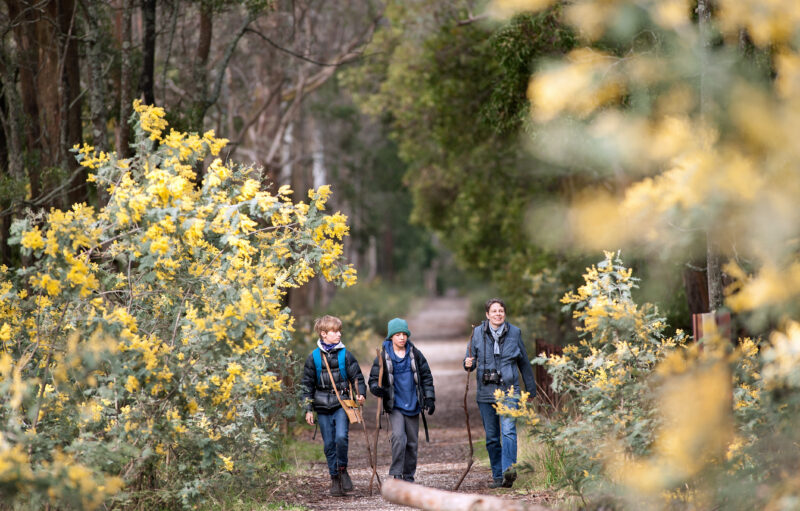PARK WATCH Article September 2025 |
The new bushfire code takes small steps but leaves big gaps, says Matt Ruchel, Executive Director
Victoria’s Code of Practice for Bushfire Management on Public Land has been quietly updated. The 2012 version was bursting with wishy-washy high-level commitments. It had no measurable accountabilities or clarity on how its vague sub-strategies and implementation plans would translate into the real world.
VNPA has documented serious problems with fire management works under the 2012 Code (‘Cracking the fire code’, ParkWatch December 2024). Examples include:
- Fuel break construction in Yarra Ranges National Park that destroyed 100 hollow-bearing trees and killed at least one Greater Glider.
- Storm clean-up and tree removal across Dandenong Ranges National Park, Silvan Reservoir, Wombat and Cobaw forests.
- Five hectares of bush mechanically mulched in Macedon Regional Park when it was too wet to burn, destroying threatened plants.
- Planned burning of two-thirds of the nationally threatened Enfield Grevillea population in Enfield State Park despite limited knowledge of how fire affects the plant.
Big gaps in the new code
When government agencies do work under the guise of fire safety, they don’t have to follow the normal rules that protect forests and native vegetation (like the Code of Practice for Timber Production). Regular forestry has strict guidelines and clearing native plants requires permits, but fire management work is exempt from these protections.
There’s no independent watchdog checking what they’re doing to nature – like when the Conservation Regulator used to oversee VicForests. This matters because they’re using the same contractors. In practice, their ‘storm clean-up’ and ‘fuel break’ work often looks just like logging – or worse, permanent land clearing.
Forest Fire Management Victoria (FFMV) keeps growing. Last year, they took over all Parks Victoria fire staff. They’ve added over 300 VicForests contractors and around 80 former VicForests employees. While other government departments face budget cuts – especially nature protection agencies – FFMV seems immune.
In our submission, VNPA identified five major problems:
- Lack of transparency and accountability.
- Failure to protect hollow-bearing trees and threatened wildlife.
- Poor fire zoning and unclear definitions.
- Weak site assessments and no role for citizen science.
- Insufficient support for cultural and nature protection goals.
Small steps forward
The new code slightly improves recognition of conservation issues but repeats many old mistakes. The word ‘biodiversity’ appears 15 times (up from five in 2012). Key improvements include:
- Requiring environmental and cultural assessments at every planning stage.
- Identifying actions to reduce bushfire impacts on threatened wildlife, old-growth forests, and Aboriginal cultural heritage.
- Contributing to positive outcomes for biodiversity and threatened wildlife.
- Creating exclusion zones where planned burning is banned in fire-sensitive areas.
- These tweaks are welcome but the code as a whole is not sufficient for protecting Victoria’s unique wildlife and forests.
Making fire management more accountable and transparent
FFMV must be answerable to the public and follow best practices that look after nature and people. In our feedback on their new guidelines, we pointed out how other states do things better. New South Wales, for example, has detailed rules for bushfire management.
The new code doesn’t include independent oversight – just processes that promise ‘continuous improvement.’ This falls far short the 2009 Victorian Bushfire Royal Commission recommendation for a significant upgrade to long-term data collection to monitor how prescribed burning affects our native wildlife and habitats.
VNPA and community groups will keep monitoring FFMV and draw attention to any problems that emerge. We hope that we don’t have to wait another decade for a bushfire code and department that protect lives and look after our natural living web.
- Read the latest full edition of Park Watch magazine
- Subscribe to keep up-to-date about this and other nature issues in Victoria
- Become a member to receive Park Watch magazine in print
